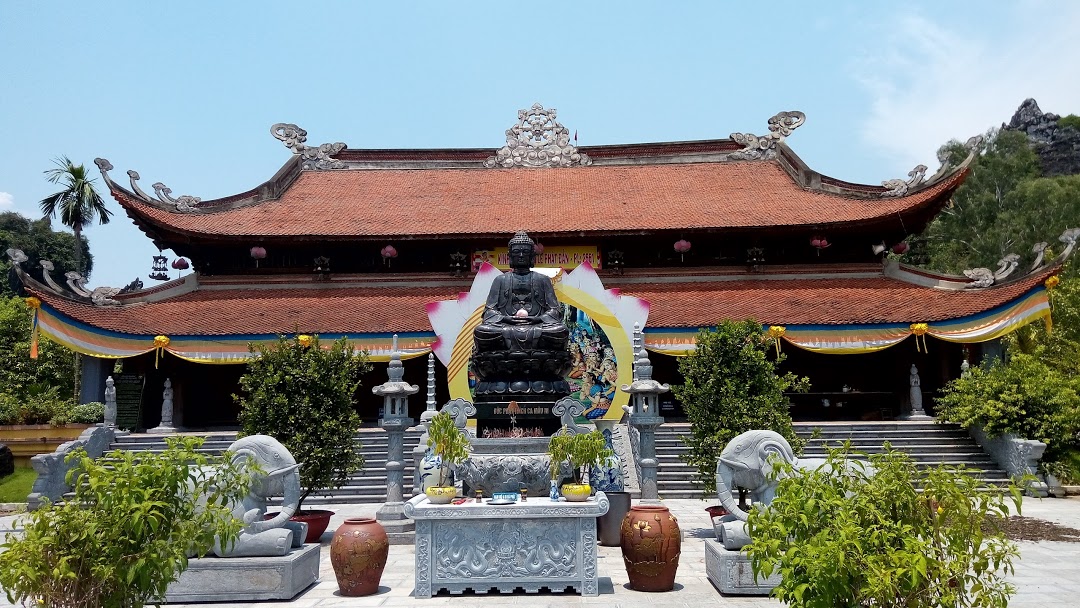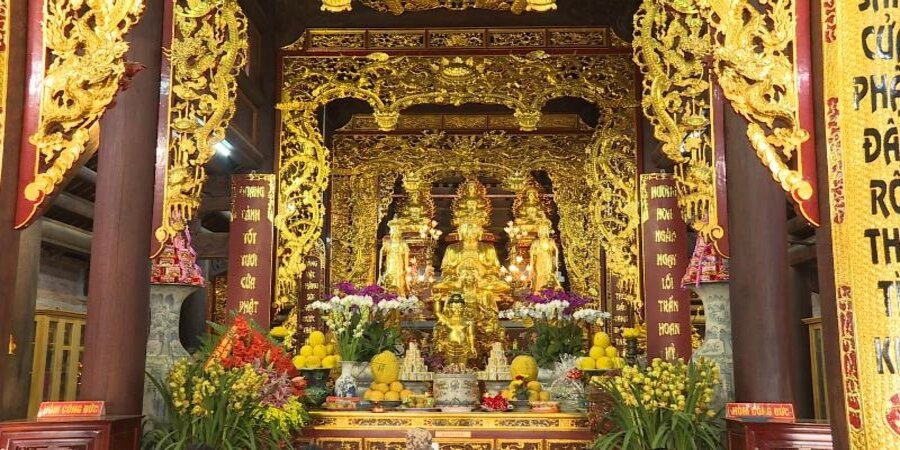Kim Son Tu Pagoda
1. Overview
Kim Son Pagoda, also widely known as Chua Hang (literally "Cave Pagoda"), is a unique and historically rich Buddhist temple located in Chua Hang Ward, Thai Nguyen City, Vietnam. Built within a natural limestone cave, the pagoda is not only a place of spiritual worship but also a site of cultural heritage and geological interest. It is one of the most famous religious and tourist attractions in Thai Nguyen Province.
2. Historical Background
Kim Son Pagoda is believed to have been founded several centuries ago, though the exact date of construction remains uncertain. It has long served as a sacred site for both Buddhist worship and Mother Goddess beliefs, reflecting the synthesis of Vietnamese spiritual traditions.
Over the years, the temple has been renovated and expanded, while maintaining its natural cave structure. The name “Chua Hang” (Cave Pagoda) has become deeply rooted in local culture, as the pagoda is entirely housed inside a large karst cave, giving it a mystical and powerful atmosphere.
3. Architectural Features
What makes Kim Son Pagoda truly exceptional is its location inside a natural cave, which shapes the entire layout and design of the temple:
-
The entrance to the cave is wide and dramatic, with stone steps leading into the temple grounds.
-
Inside, the cave walls form natural altars and niches for Buddhist statues.
-
The interior is cool and dimly lit, with stalactites and stalagmites enhancing the sacred ambiance.
-
Worship areas include statues of Shakyamuni Buddha, Quan Am (Avalokitesvara Bodhisattva), and local deities such as Mother Thuong Ngan (Mẫu Thượng Ngàn).
-
Incense smoke blends with the cave’s cool mist, creating a mysterious yet peaceful atmosphere for prayer and meditation.
Outside the cave, there are newer structures and shrines, as well as vendors selling religious items and local specialties.
4. Cultural and Religious Importance
Kim Son Pagoda is a vibrant center of folk belief and Buddhist practice. It plays a significant role in:
-
Hosting pilgrimages and spiritual festivals, particularly during Lunar New Year (Tet) and the first lunar month, when thousands of people visit to pray for luck, health, and prosperity.
-
Offering a space for the blending of Buddhist and indigenous Vietnamese worship, especially the Mẫu (Mother Goddess) tradition.
-
Serving as a community hub for spiritual guidance, charity, and cultural education.
The temple is deeply respected not only by Buddhists but also by people who follow traditional Vietnamese animist and folk beliefs.
5. Visiting Information
-
Location: Chua Hang Ward, Thai Nguyen City, Thai Nguyen Province
-
Opening Hours: Open daily; busiest during Tet and the first lunar month
-
Entrance Fee: Free (offerings and donations are appreciated)
-
Recommended for: Spiritual pilgrims, cultural tourists, nature lovers, and photographers
-
Tips: Bring comfortable shoes (due to uneven cave floor) and dress modestly as a sign of respect
6. Conclusion
Kim Son Pagoda, or Chua Hang, offers a rare combination of natural wonder and spiritual depth. With its breathtaking cave setting, centuries-old spiritual traditions, and cultural richness, it remains a powerful symbol of Vietnamese religious heritage. Whether you seek blessings, historical insights, or simply a quiet place to reflect, Kim Son Pagoda is an unforgettable destination in Thai Nguyen.



